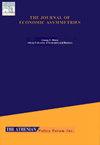Factors influencing asymmetries in Saudi Arabia's housing market
Q1 Economics, Econometrics and Finance
引用次数: 0
Abstract
The article aims to examine the determinants of the asymmetries in the housing prices index (HPI) in 13 Saudi Arabian administrative regions. The authors employ a panel Vector Auto-regressions during the period 2014Q1-2023Q4 to measure the role of speculative and fundamental determinants in HPI growth across 13 regions. Furthermore, we use Least Square Dummy Variable method for the period 2015–2021 to analyze the asymmetry impact of region-specific determinants (economic, demographic, urbanization, geographic, and cultural variables) on HPI growth in 13 admirative regions. The results from the panel VAR model show that the reginal house prices growth is determined by the backward-speculative component (HPI's past values), the forward-looking speculation (Consumer Confidence Index), and the fundamentals variables (oil prices, employment, real estate loans, regional inflation, money supply, and building cost index). Furthermore, cross-section analysis using LSDV method reveals that the asymmetries in the HPI growth across 13 administrative regions is determined by the region-specific variables. These include backward-looking behavior, inflation, labor participation, population, health services quality, household size, inverse land supply, seaside density, temperature, and culture density. This study offers three key contributions to the literature. First, to the best of the author's knowledge, this is the first study that analyzes the asymmetries across Saudi Arabian regional housing markets. Second, while most studies focus on backward-looking speculation, overlooking forward-looking speculative factor, this analysis includes both. Third, the climate, geographical, and cultural determinants are largely ignored by the literature but this study incorporates these variables in the cross-section analysis.
影响沙特阿拉伯住房市场不对称的因素
本文旨在研究13个沙特阿拉伯行政区域的住房价格指数(HPI)不对称的决定因素。作者在2014年第一季度至2023q4年期间采用面板向量自回归来衡量13个地区HPI增长中投机和基本决定因素的作用。此外,我们使用2015-2021年期间的最小二乘虚拟变量方法分析了13个令人满意地区的特定区域决定因素(经济、人口、城市化、地理和文化变量)对HPI增长的不对称影响。面板VAR模型的结果表明,地区房价增长是由后向投机成分(HPI的过去值)、前瞻性投机成分(消费者信心指数)和基本面变量(油价、就业、房地产贷款、地区通货膨胀、货币供应量和建筑成本指数)决定的。此外,利用LSDV方法进行的横截面分析表明,13个行政区域HPI增长的不对称性是由区域特定变量决定的。这些因素包括向后看的行为、通货膨胀、劳动力参与、人口、卫生服务质量、家庭规模、反向土地供应、海滨密度、温度和文化密度。本研究为文献提供了三个关键贡献。首先,据作者所知,这是第一个分析沙特阿拉伯地区住房市场不对称性的研究。其次,大多数研究关注的是回溯性投机,而忽略了前瞻性投机因素,而本分析同时包含了这两种因素。第三,气候、地理和文化因素在很大程度上被文献所忽视,但本研究将这些变量纳入了截面分析。
本文章由计算机程序翻译,如有差异,请以英文原文为准。
求助全文
约1分钟内获得全文
求助全文
来源期刊

Journal of Economic Asymmetries
Economics, Econometrics and Finance-Economics, Econometrics and Finance (all)
CiteScore
4.80
自引率
0.00%
发文量
42
审稿时长
50 days
 求助内容:
求助内容: 应助结果提醒方式:
应助结果提醒方式:


